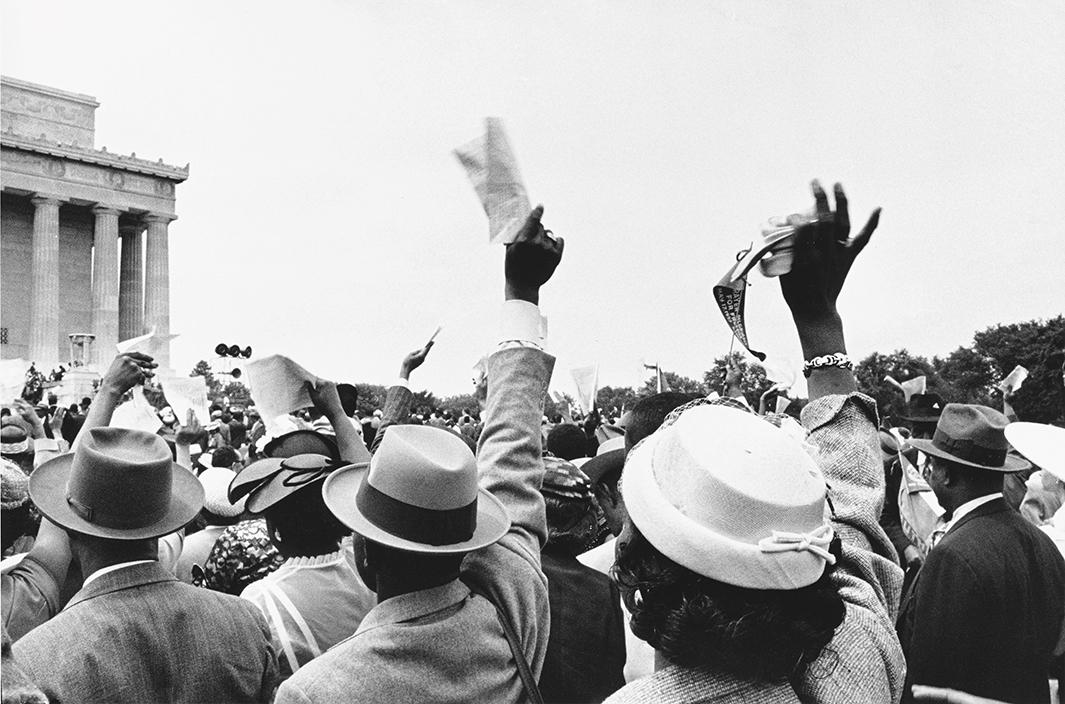In 1957, Lee Friedlander was just 22 and mostly earning a living making photos for Atlantic album covers. He hadn’t yet published his first monograph, nor had he fully developed the approach to image-making that would make him famous.
But he was ambitious and, moreover, curious, which is what drew him to the Prayer Pilgrimage for Freedom, a massive demonstration in Washington, D.C., on the third anniversary of Brown v. Board of Education designed to protest the slow enforcement of the decision in the South. In New York City, Friedlander asked organizer Bayard Rustin for a press pass to cover the event. On May 17, he spent the day photographing some of the 25,000 people, among them leading figures in the civil rights movement, who gathered in front of the Lincoln Memorial.
“To think this was done by a 22-year-old in a day is kind of remarkable,” said photographer and director of the Eakins Press Foundation Peter Kayafas.
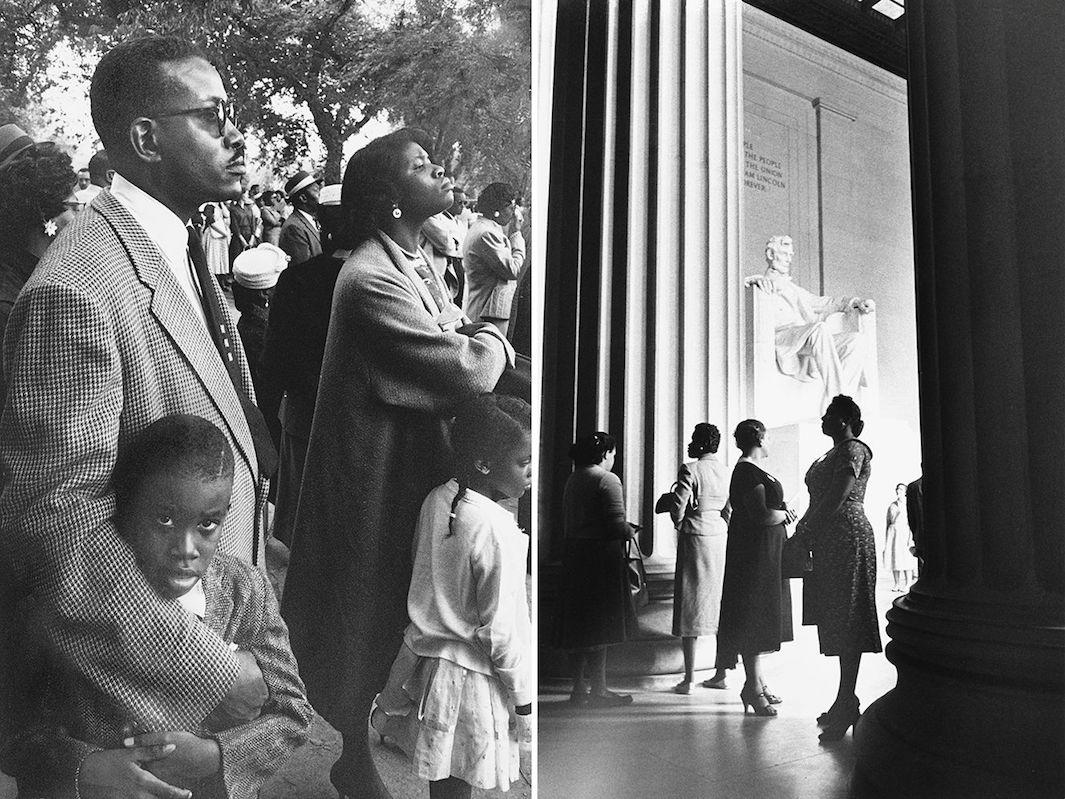
Lee Friedlander/Eakins Press Foundation

Lee Friedlander/Eakins Press Foundation

Lee Friedlander/Eakins Press Foundation
Kayafas was working with Friedlander on an exhibition at the Pratt Institute in 2014 when the photographer, now 81, showed him 58 unpublished photos from the event, which he’d extracted from his extensive archive. The photos are now collected in a book, Prayer Pilgrimage for Freedom, which the Eakins Press Foundation published in September.
The press pass allowed Friedlander access to the main stage, where he photographed major figures such as Mahalia Jackson, Harry Belafonte, A. Philip Randolph, and a 28-year-old Dr. Martin Luther King Jr., who delivered his first speech, on the subject of voting rights, for a national audience that day. Though the event isn’t as well-remembered as later civil rights demonstrations, it’s notable for being the first major march on Washington of its kind.
“I think Lee had a sensitivity, like many photographers do, of what was happening in his time period that was relevant and likely to have a broad-reaching affect on history,” Kayafas said.
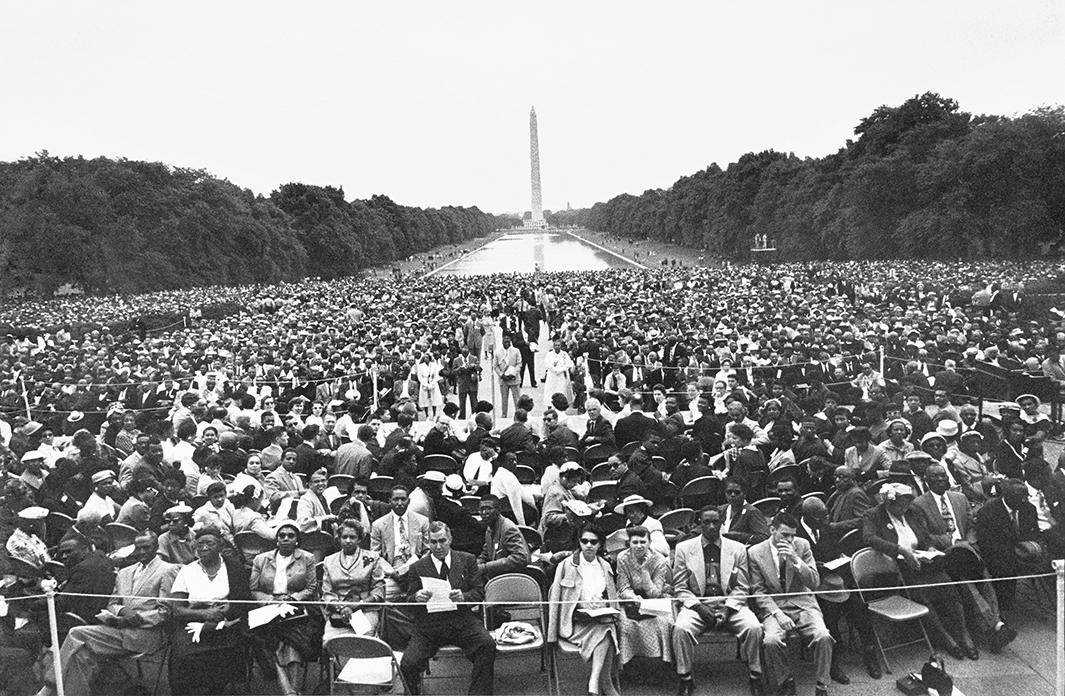
Lee Friedlander/Eakins Press Foundation
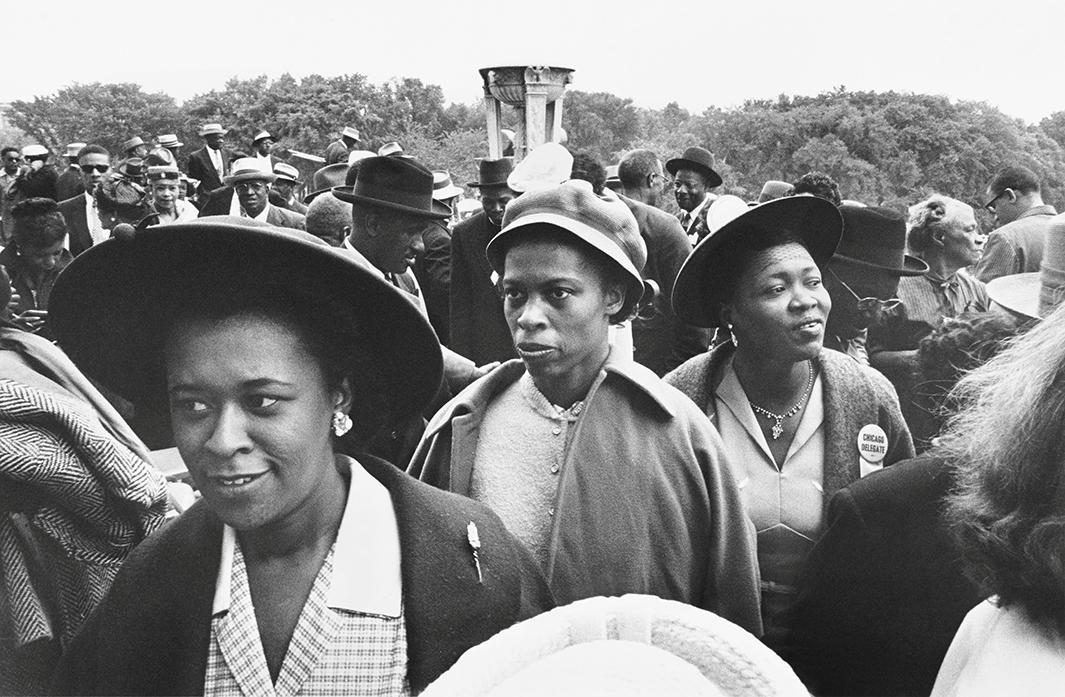
Lee Friedlander/Eakins Press Foundation
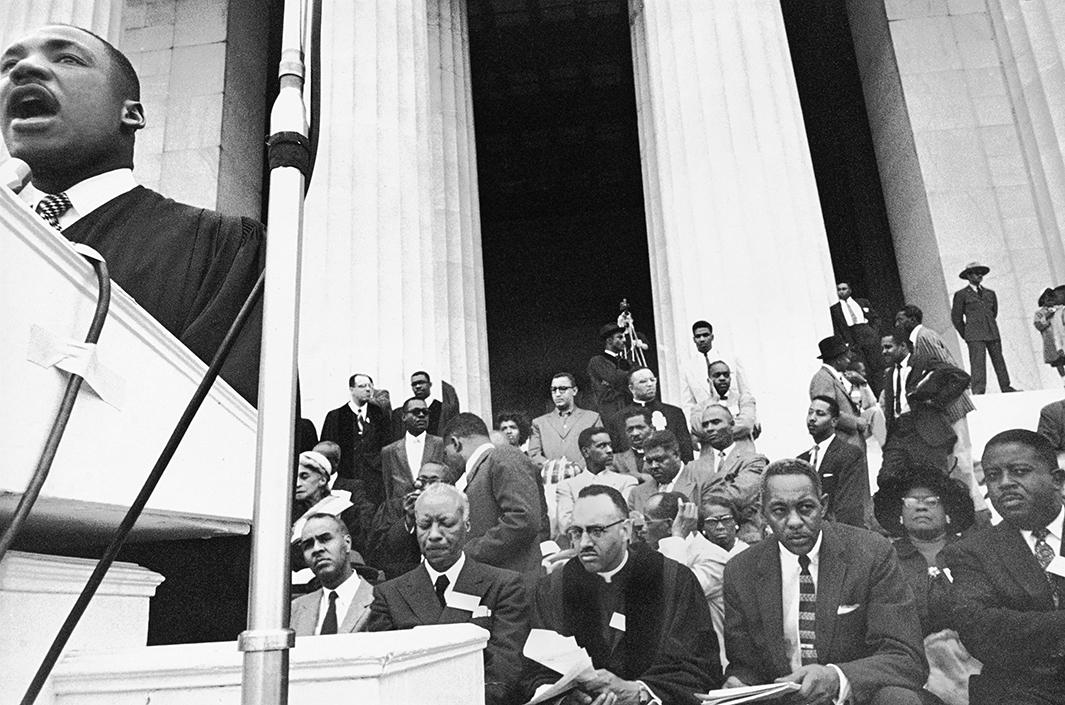
Lee Friedlander/Eakins Press Foundation
Friedlander’s photos of the demonstration’s most prominent attendees are valuable historical records today, but the photos that resonate most are those of the relatively anonymous demonstrators—“so calm and civilized, so graceful and humane,” as curator Peter Galassi described them. Though they represent a more standard documentary style compared to Friedlander’s better-known work, Kayafas said they undoubtedly carry the photographer’s signature.
“I look at it very much as an unadulterated Lee Friedlander subject. I do think there was a level of maturity in the pictures that is profound. Of course, his style continued to develop,” he said.
These days, Friedlander still loves making and developing photos, and spends much of his time poring through his old photos with an archivist, in search of other lost gems.
“He spends pretty much every day in the dark room when he’s not out shooting. The medium, for him, has become a way of life.”

Lee Friedlander/Eakins Press Foundation

Lee Friedlander/Eakins Press Foundation
